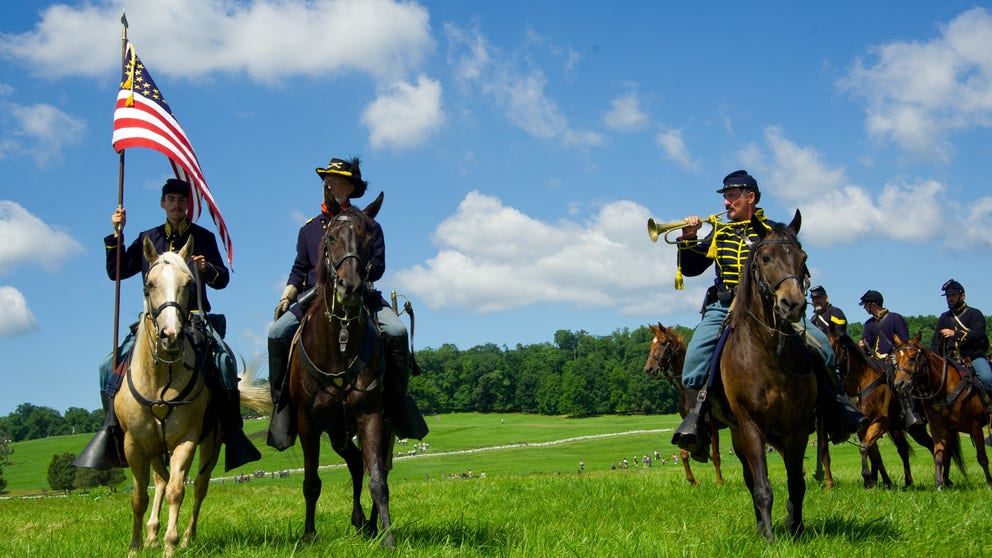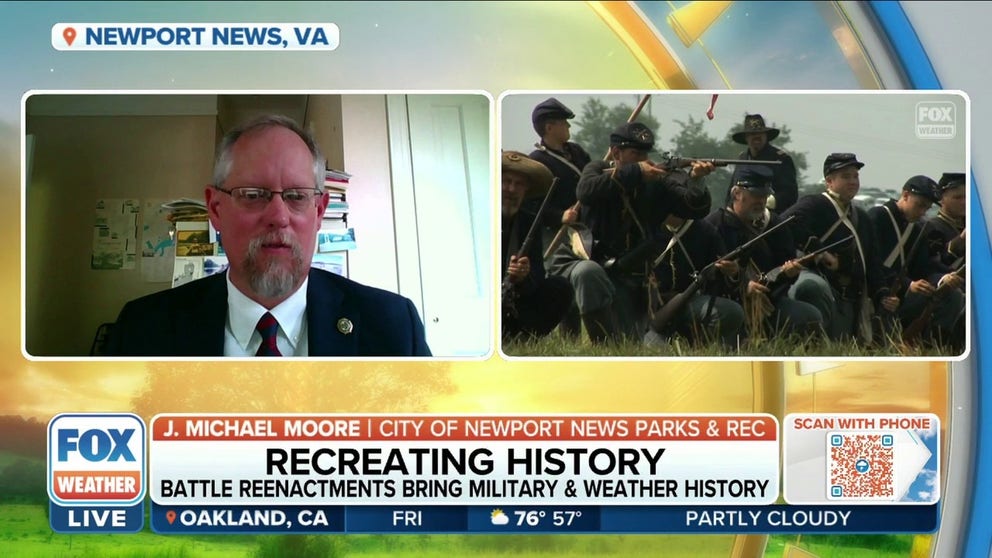How battle reenactments bring military and weather history to life
In places such as Newport News, Virginia, visitors can learn how soldiers lived and fought centuries ago
Recreating History
Battle reenactments bring military and weather history to life.
3...2...1...BOOM
Cannons fire off, creating billowy clouds of smoke that hang over a field.
Soldiers, donning dark blue and red coats, march toward each other with muskets in tow.
All the while, an audience looks on — being transported back in time and watching history unfold.
In living history
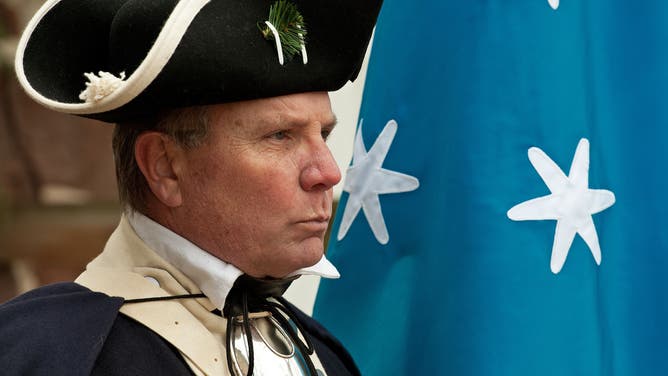
A reenactor plays General George Washington during the American Revolutionary War.
(Paul J. Richards/AFP / Getty Images)
"Reenactments are a living history event that provide modern visitors a window back in time," said J. Michael Moore, the historic sites curator for the city of Newport News, Virginia.
Moore’s team has produced battle reenactments throughout American history. The reenactments are usually set on a historic property, an environment that helps transport visitors to the past.
"It's an entire atmosphere," Moore said. "There's men marching in Revolutionary War uniforms, Civil War uniforms, War of 1812, or whatever period is being depicted."
"And with the civilians that are part of that, it adds a layer of realism that helps the modern visitor imagine what it might have been like to live in a time without Internet, without air conditioning and other modern conveniences that we are quite used to and happy with," he added.
Reenacting the past
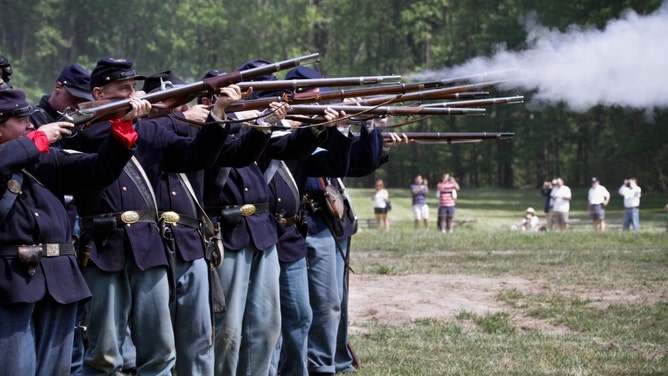
Soldiers fire their arms during a Civil War reenactment.
(Historic Endview, Newport News, VA)
Each of the battle reenactments involves months of preparation for both staff and for those involved in the reenactments.
"You have to make sure you have hay for the horses. There's gunpowder for the cannons. There is encampments, there's firewood — I've spent a week splitting firewood with other staff members and stacking it in different strategic locations," Moore laughed.
With so much involved in the productions, fair weather is critical to making sure the reenactments go swimmingly and to ensuring that visitors are having a good time.
How battle reenactments bring military and weather history together
In places such as Newport News, Virginia, visitors can learn how soldiers lived and fought centuries ago. J. Michael Moore, historic sites curator for Newport News, Virginia, joined FOX Weather Sunrise to tell us more about these battle reenactments.
But sometimes, the weather chooses to go rogue.
"If it really starts pouring rain, welcome back to the 18th and 19th centuries because you're going to have an experience that you didn't even have to pay for." - J. Michael Moore
"I'd been there when the roads were turned into a morass of mud, and we had to get the re-enactors out with their modern cars off the field and pull," Moore said.
"I pulled a Civil War-era reproduction cannon tube with a John Deere gator to get it out of there before the rain got so bad, that it would've got stuck."
While foul weather can introduce a few kinks into the reenactments, it also provides an authentic experience for visitors and reenactors alike, giving them a chance to learn how battles were fought in the elements.
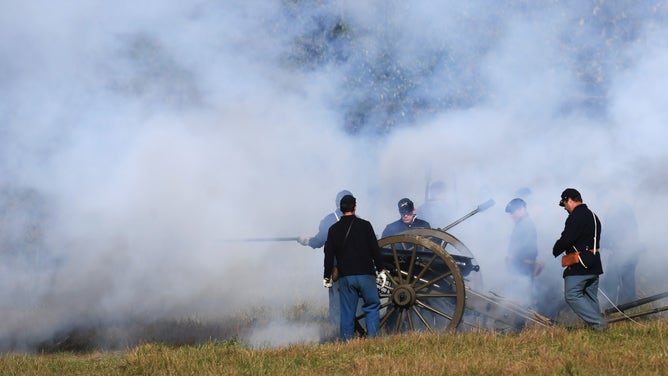
Smoke shrouds soldiers around a cannon.
(Matt McClain / The Washington Post / Getty Images)
Moore noted how rainy conditions would cause cannonballs — which would usually bounce along the ground once shot — to instead sink into the mud and get stuck. Also, soldiers would try to make the most of muddy conditions by laying down planks of wood or oyster shells on roads to make them more passable.
READ ABOUT THE 7 TIMES WEATHER AFFECTED WAR
"If it really starts pouring rain, welcome back to the 18th and 19th centuries because you're going to have an experience that you didn't even have to pay for," Moore laughed. "You get to experience what it was like for your ancestors to be in a wagon or walking or on a horse — when it really started raining heavily, it just shut down everything."
Weather at war
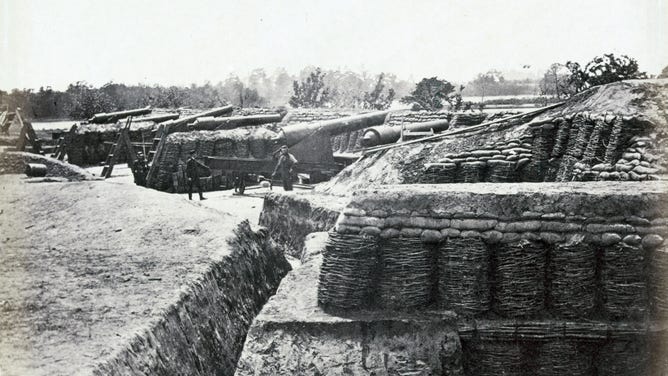
Cannons at a Union army battery in 1862.
(Photo 12 / Universal Images Group / Getty Images)
"You always have to take into consideration the weather conditions," Moore said. "You can have the best general and the best troops, but if your ammunition's wet and your cannons are bogged down, you're not going anywhere. You're not going to do a whole lot."
According to Moore, soldiers and sailors would try to predict the weather by using the Farmer’s Almanac or by reading clues in nature, such as cloud formations and the behavior of animals.
LEARN ABOUT THE 200-YEAR HISTORY OF THE FARMER’S ALMANAC
"But I can tell you, whether it's a historical battle or reenacting battles, it starts pouring rain, the results are still the same," he said.
For example, during the Civil War’s Peninsula Campaign of 1862, it rained for most of the month of April. This deluge turned the clay roads near Richmond, Virginia into mud, bogging down the largest army in American history, according to Moore.
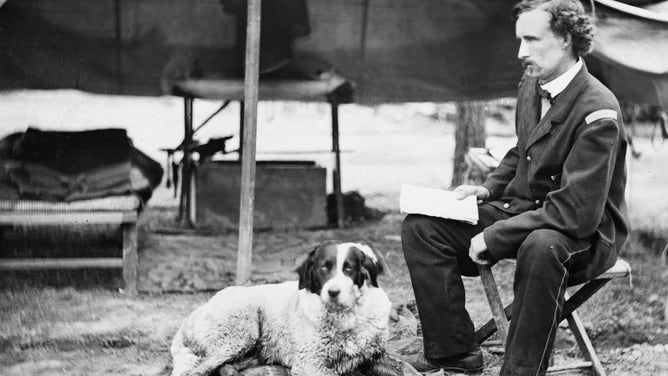
Lieutenant George Custer with his dog during the Peninsula Campain in 1862.
(Universal History Archive / Universal Images / Getty Images)
However, operations could still be halted when the weather was relatively pleasant.
At another Civil War battle near Richmond called the Battle of Seven Pines, atmospheric conditions created an acoustic shadow. The acoustic shadow prevented a general from hearing how close the opposing forces were, eventually leading him to be shot in the chest and shoulder, said Moore.
"They didn't have any other way of communicating except by listening to the sound," he said. "They had rudimentary telegraph, but that's not going to be as portable. You had to send couriers and you yourself as a commander, if you and I were out on the field, you and I would go toward the sound of the battle."
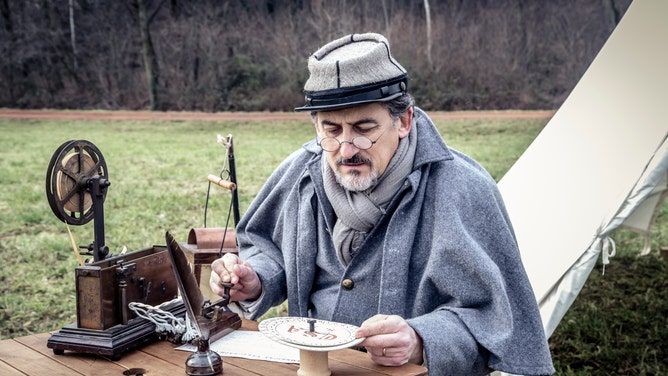
A participant reenacts the use of a telegraph during the Civil War.
(Mondadori Portfolio / Getty Images)
"Well, if you can't hear it and the weather's messing up the sound waves, then you could very well lose the battle or the war because you can't tell what's going on."
Visitors can learn lessons such as these by watching battle reenactments. But the people who arguably learn the most are the reenactors themselves.
Passion project
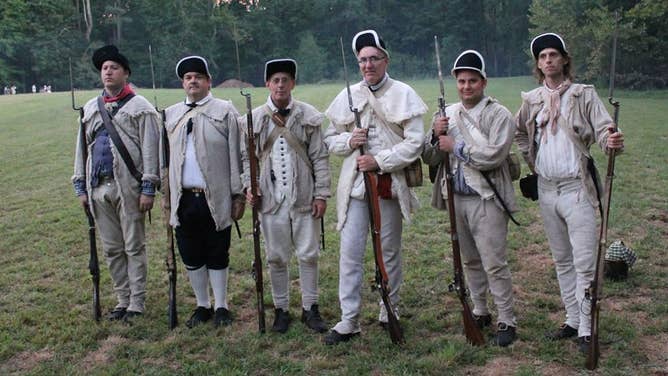
American soldiers during a Revolutionary War reenactment.
(Historic Endview, Newport News, VA)
Dressed in period garb, battle reenactors look as if they were straight out of a history book.
According to Moore, most of them are volunteers and many are veterans.
SEE HOW TO FLY THE AMERICAN FLAG WITH RESPECT
"So, this isn't their first time being out in the field with it raining on them — they're just wearing a different uniform," he added.
Many reenactors reference historical images and art to see what types of uniforms were worn. They also learn about official uniform regulations of the U.S. and British armies, along with the Union and Confederate armies and navies, to make sure their uniforms are historically accurate.
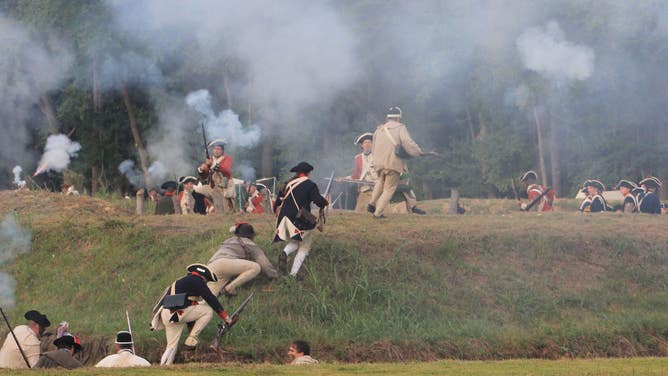
Soldier scramble up a hill while re-enacting a Revolutionary War battle.
(Historic Endview, Newport News, VA)
Beyond what they wear, reenactors also research period manuals to learn how to drill, how to go through the school of the soldier and how to do manual arms properly.
"There's many things that you can go on from the time period, and people spend their entire lives studying the material culture of the Revolutionary War, War of 1812 or American Civil War," Moore said.
"It's a passion for many people."
History for all
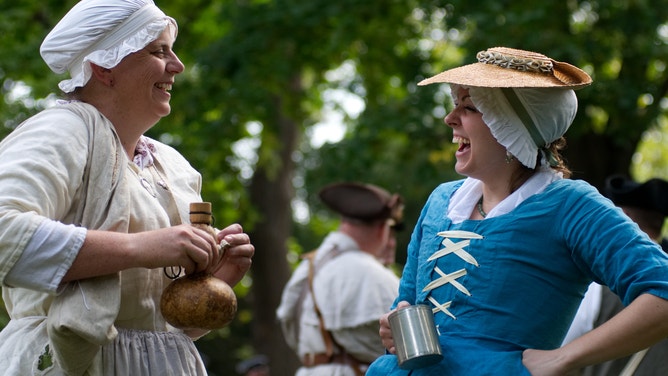
Participants at a reenactment of the Battle of Germantown during the Revolutionary War.
(Bastiaan Slabbers / NurPhoto / Getty Images)
For Moore, battle reenactments can offer a unique learning experience apart from the pages of a history book.
"If you're learning about a Revolutionary War battle, that's one thing," he said. "But when you actually go out and you see lines of British infantry and their Redcoats marching with officers on horses, you're hearing the noises — it's more tactile. You're able to really envision something."
"If you go to a reenactment you are going to learn what it was like maybe to live back then or to fight, to carry on a military campaign," he added.
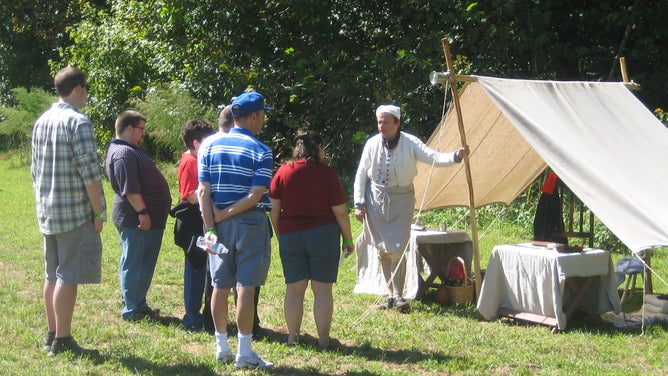
A Revolutionary War reenactor teaches visitors.
(Historic Endview, Newport News, VA)
Many people who attend the reenactments are history buffs who enjoy history documentaries and read "voraciously" about history. But according to Moore, even if someone doesn’t have that same level of passion, the battle reenactment experience can still offer them so much.
"I think it's important for people to have an understanding of European world history, any type of multicultural history, American history. They need to understand the past," he said.
"One of the things they always drove home to me when I was in undergrad and grad school was, ‘If you do not understand your past, how are you going to understand your future?’ — you have to know where you've been to know where you're going."
